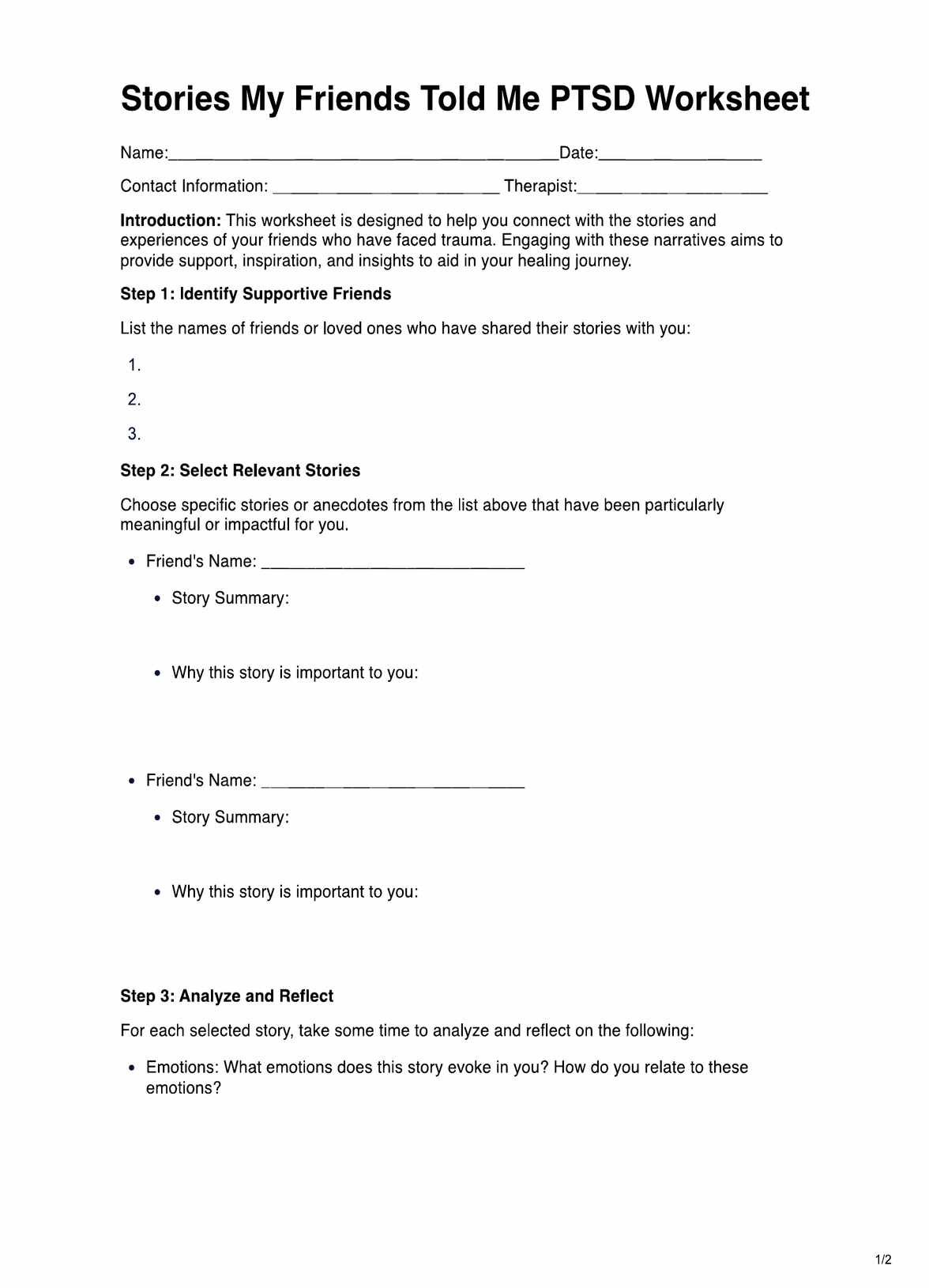Individuals who have been diagnosed with PTSD or are struggling with trauma-related challenges can benefit from using this worksheet. It can also be helpful for therapists, counselors, and support group facilitators in their work with clients or patients.

Stories My Friends Told Me PTSD Worksheet
Manage PTSD with Stories My Friends Told Me Worksheet—effective healthcare tool for coping and healing. Get started now.
Stories My Friends Told Me PTSD Worksheet Template
Commonly asked questions
The worksheet aims to provide emotional support, hope, and practical coping strategies by allowing individuals to engage with the stories and experiences of their friends who have faced trauma. It encourages reflection, connection, and healing.
The worksheet typically includes sections for selecting relevant stories, analyzing their emotional and practical insights, journaling reflections, and creating an action plan based on the shared narratives. Users can follow the provided steps to engage with it effectively.
EHR and practice management software
Get started for free
*No credit card required
Free
$0/usd
Unlimited clients
Telehealth
1GB of storage
Client portal text
Automated billing and online payments











